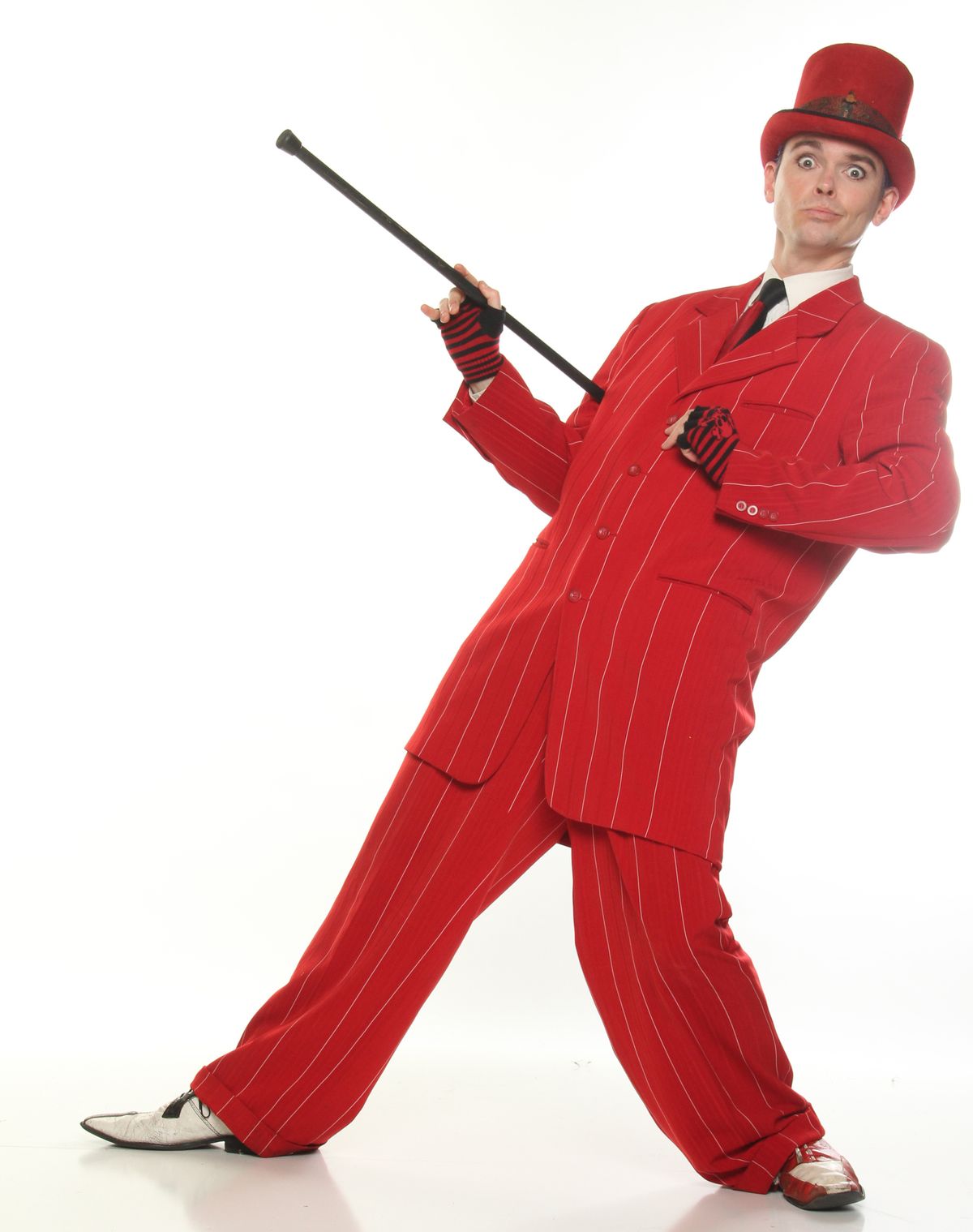Incredible reality
Wanderlust Circus tells its gravity-defying story on the Bing’s up-close-and-personal stage

An acrobat climbs another’s thighs and back to balance, inverted, on his partner’s shoulders – one set of feet planted and one pointed skyward. Aerialists scale suspended lengths of silk to dance in all the directions, up and down included. Jugglers lie on their backs on stage, feet up, to juggle not only objects but each other.
The performers in Wanderlust Circus offer an experience that might seem a little unreal – but really, its ringmaster said, it might be the realest thing its audience sees all week.
This circus, performing Thursday at the Bing Crosby Theater, will bring no elephants or lions to town. An example of “nouveau cirque,” or “new circus” – booming in Europe, Japan and Australia and gaining traction in the U.S. – Wanderlust showcases human beings performing incredible feats, and none by animals. Emphasizing acrobatics and aerialism, it’s performed in theaters rather than under a big top. Its various shows are connected by a storyline.
As entertainment, it’s the opposite of reality television, said Noah Mickens, who’s the Portland-based circus’s co-owner and co-director as well as ringmaster.
“It’s taking place right in front of your eyes, and it’s absolutely, unmistakably real,” Mickens said. “You can hear the sounds of people’s feet pounding the boards, and you can see the aerial straps flexing as people are shifting their weight from their hands to their feet.”
There’s a value in that, he said: As we spend more time staring at TV and computer screens or through windshields, visceral, “really real life” experiences grow more scarce.
Wanderlust performers “don’t experience our lives that way, and for the time that you are with us in the theater, it is a removal of that screen and the chance to plug into a real experience.”
The circus’s name refers to the performers’ shared itinerant lifestyle and to the fictional narrative that weaves through its shows. It’s a show about trying to put on a show, with juggling and immortality: A cursed circus family is forced to travel ceaselessly, enduring misadventure.
Each of Wanderlust’s shows takes place in a single period – 1920s, present day, in the future. “Endless Road,” the show slated for Spokane, is a story of an ’80s guy – “a Venice Beach muscle man,” Mickens said – who falls in love with a circus performer and begins to discover the troupe’s secret.
After enjoying popularity on par with professional sports today, the traditional circus was devastated by the rise of movies and TV, circus historian Duncan Wall wrote in the New York Times in March. Starting in the 1960s, a few “new circuses” dropped the big tops and animal acts in favor of characters and plots, he wrote.
America made early contributions to the new art form, notably in the mid-1970s with the Pickle Family Circus, founded in San Francisco, and the Big Apple Circus, which raised its first tent in Battery Park, New York.
Compared with its presence overseas, though, the art form has been slow to flourish in North America, emerging from underground arts scenes and reaching larger audiences only the past decade or so, Mickens said. Cirque du Soleil, the most famous “nouveau cirque” company, now says more than 100 million spectators have seen its productions.
Cirque du Soleil represents “nouveau cirque” on a “grandiose” scale, said Ryan Rogers, owner of Salem-based Ravens Flight Creative, which is producing Wanderlust’s tour.
Wanderlust represents circus’s grass-roots beginnings, he said.
“It’s a small, intimate venue,” Rogers said, adding that audiences can expect the show to end before the fireworks show begins at dusk in Riverfront Park.
“You’re close to the action. You can meet the performers. It’s more of that true traveling circus, vaudevillian concept, but brought into the modern age.”